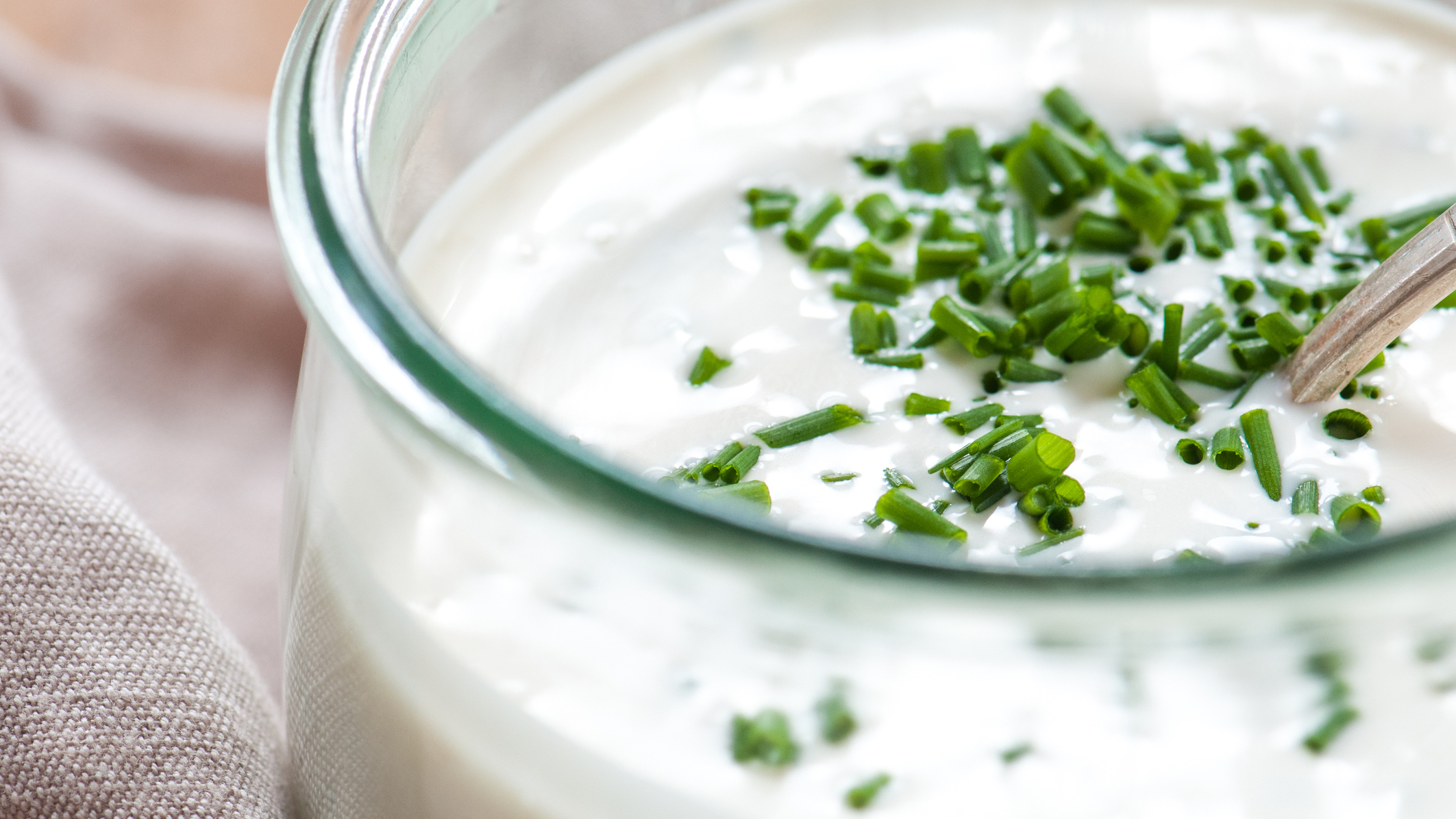God Bless Ranch Dressing, And May God Bless The United States Of America
We may receive a commission on purchases made from links.
White gold. The spoils of the Hidden Valley. The Midwest's ketchup. You guessed it—we're talking ranch dressing. In honor of National Ranch Dressing Day, it seems appropriate to pay homage to the condiment that has given us so much, from unrepentant palatal joy to a couple extra pounds.
As both a concept and a condiment, ranch has become a perfect garlicky storm, dipping and dunking its way through the States. That the catchall sauce has become a bottled encapsulation of America's passion for all things savory and creamy, plus our propensity for driving anything and everything into the fucking ground, ranch has arguably risen from mere sauce to pop cultural object. Doth protest? Check out the menu for Twisted Ranch, a St. Louis restaurant that hosts 27 varietals of the dressing. If you're feeling nostalgic for your 2003 Sidekick, you can scoop up a jewel-encrusted Hidden Valley bottle. Not even Hollywood is immune to the ranch mania; Olivia Wilde just Instabragged about her own pair of pizza 'n ranch earrings.
Like everything with a lifespan, ranch has undergone something of an evolution over the years. It had some stop-and-go salad days (sorry), a few years of soul-searching and recipe tweaking, and finally a moment of self-realization, earning a spot in nearly every fridge and on every restaurant menu in the States. What most of us don't realize is that the most quintessentially American condiment wasn't always the toothsome crème we know and love today. Back in the '50s, ranch was little more than a kitchen experiment hawked off a dude ranch in California.

In its earliest and most primitive form, ranch dressing was a savory passion project concocted by Nebraska-born cowboy Kenneth Henson (the owner and proprietor of Hidden Valley Ranch). The savory dip was the result of years of trial-and-error involving buttermilk, garlic, onion, and a cupboard's worth of dried herbs and spices. Henson's toiling in the kitchen eventually paid off—guests of Hidden Valley devoured the scandalously rich dip, departing with to-go jars to share with friends.
What comes after is about as American as a Styx song blasting at a monster truck rally sponsored by Bud Light. By 1972, demand for ranch had vastly outgrown Henson's kitchen and none other than Clorox stepped in to swap dollars for dreams to the tune of $8 million. It would take ten years before the braintrust behind OxiMax and 409 masterminded a shelf-stable iteration of the product, but when that breakthrough arrived, the sweet tang of the Hidden Valley hit supermarkets across the US faster than you can say "and a side of ranch with that."
Whatever savant said that you can never have too much of a good thing obviously never tried ranch-flavored breath mints or choked down a dollop of "zesty" ranch hummus. What ranch did have was approachable, familiar flavors. With none of the throaty burn (chili sauce) of Thousand Island and none of the subtle polarizing fishiness (Caesar and Green Goddess) of its competitors, ranch was a revelation for Americans who yearned for a vehicle to mainline umami goodness without treading outside of their meat-and-potatoes comfort zone. (To borrow a term from French gastronomy, one could argue ranch is the true American mother sauce.)
Clorox was well aware of this cautious mindset and responded accordingly by shoehorning ranch into nearly every savory product segment. KFC Twisters? Ranch it. Wavy Lay's? Ranch it some more. How bout Applebee's Tequila Lime Chicken? Well, smother it in a gloopy mess of whatever-the-hell "Mexi-ranch" proposes to be. Despite some partial hits and epic misses, America embraced ranch's cult of personality with open arms and wagging tongues, hoisting ranch to the top salad topper in the country—a post it's held since 1992.
Ranch's ascension can be owed to an inoffensive flavor profile and clever marketing as much as a national nostalgia. The dressing has spawned its own anthropology, one that is deftly portrayed by a gloriously unrefined Melissa McCarthy in a Hidden Valley focus group sketch on Saturday Night Live. Far more than a foolproof way to get kids to eat their vegetables and another commodity that can be tagged as "prototypically American," ranch has become vehicle for American excess, a beacon of culinary hedonism. Delving down the Internet rabbit-hole of ranch dressing fandom will reveal a bleak glimpse into the psyche and diets of Americans everywhere. Whether it's being swigged from a soda bottle or being tapped from a keg, our nation's co-opting of ranch is a testament to the maniacal brawn of American ingenuity. It's part of the absurd charm about ranch and America as a whole—it yields to no commonsensical restraint or obesity epidemic. It is and always will be.
As is the case with all beacons of good, they can just as easily be contorted into instruments of evil. Ever hear that joke about the woman who slipped on ranch and sued the world for it? That actually happened a few weeks back. The Hidden Valley Ranch Outlet is enough to make your stomach churn and wallet quiver. And if that's not enough to make you wonder where the line between comedy and lunacy lies, it was well beyond crossed by Rhett and Link marinating in a ranch dressing bath.
In a world of uncertainties, a true salve for the soul is hard to come by. Reliability, versatility, pure, unadulterated joy—the Hidden Valley brought us all of those things. So go ahead, throw some ranch on your pizza, on some avocado toast, or straight down your throat, you party animal. We're all doomed anyways.
